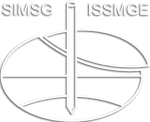Suitability of bentonite treatment for liquefaction mitigation of pond ash for ash dyke construction
Suitability of bentonite treatment for liquefaction mitigation of pond ash for ash dyke construction
Combustion of coal in thermal power plants results in the generation of large quantities of ash. The finer ash (< 45 microns) is utilized by cement industries. The remaining portion along with the bottom ash is transported to the ash pond (disposal site) in the form of slurry. This disposed pond ash being a waste material needs to be utilized in raising dykes around the ash pond. However, pond ash being highly prone to liquefaction may cause catastrophic failures if used without treatment. The present study investigates the efficiency of commercially available bentonite in the mitigation of the liquefaction issues of compacted pond ash for ash dyke construction. Bentonite was used in small dosages (0%, 2.5%, 5%, 7.5%, and 10%) to treat the pond ash. Strain-controlled cyclic simple shear (CSS) tests were performed to study the effect of bentonite treatment on liquefaction behavior and dynamic properties of compacted pond ash. The hysteresis response of bentonite-treated pond ash showed higher cyclic strength than the untreated pond ash. The untreated pond ash specimens showed cyclic liquefaction in only 12 loading cycles. However, the bentonite-treated specimens showed a delayed pore pressure evolution and higher liquefaction resistance. The average shear modulus increased and the cyclic degradation parameter decreased linearly with an increase in the percentage of bentonite. Considering the liquefaction, cyclic instability, and dynamic characteristics; it was concluded that the addition of bentonite in small percentages (between 5% to 10%) could provide significant liquefaction resistance and high stiffness to the compacted pond ash under cyclic loading conditions.
B. Kumar Agarwal; A. Sachan
9th International Congress on Environmental Geotechnics (ICEG2023)
Advances in Testing and Material Characterization
https://doi.org/10.53243/ICEG2023-143
